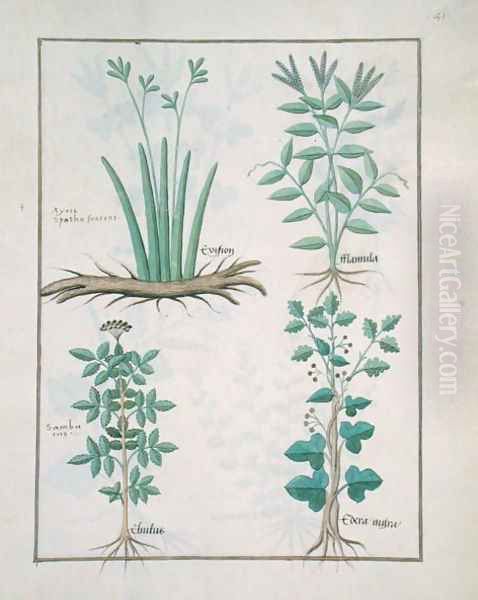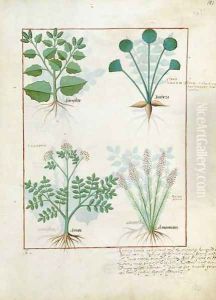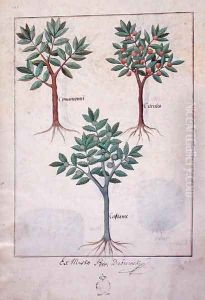





Top row- Xyris and Spearwort. Bottom row- Common Elderberry and Hedera, illustration from The Book of Simple Medicines, by Mattheaus Platearius d.c.1161 c.1470
-
About Reproduction
Discover the allure of art with our faithful reproduction of "Top row- Xyris and Spearwort. Bottom row- Common Elderberry and Hedera, illustration from The Book of Simple Medicines, by Mattheaus Platearius d.c.1161 c.1470", originally brought to life by the talented Robinet Testard. Unlike posters or prints, our hand-painted oil painting breathes an unique sense of depth and texture into your space. Every detail, every stroke, and every texture is meticulously recreated, paying the perfect homage to Robinet Testard and his artistic vision.
Owning this piece is more than just decoration - it's a statement of your refined taste in art. Let the vibrant colors and intricate details of this replica serve as a daily reminder of the beauty in our world. Elevate your decor and appreciate the richness of art with our replica of this masterpiece.
-
Painting Description
The illustration titled "Top row- Xyris and Spearwort. Bottom row- Common Elderberry and Hedera" is a notable work from "The Book of Simple Medicines," originally authored by Mattheaus Platearius, who passed away around 1161. This particular illustration, created circa 1470, is attributed to Robinet Testard, a prominent French illuminator known for his detailed and vibrant manuscript illustrations.
"The Book of Simple Medicines" (originally "Liber de Simplici Medicina") is a medieval herbal that compiles knowledge about the medicinal properties of various plants. It was widely used during the Middle Ages as a reference for medical practitioners and herbalists. Mattheaus Platearius, a physician from the renowned medical school of Salerno, Italy, is credited with the authorship of this influential text. The work is a testament to the medieval understanding of botany and medicine, reflecting the era's reliance on natural remedies.
Robinet Testard, active during the late 15th century, was known for his work in the courts of France, particularly for his contributions to illuminated manuscripts. His illustrations are characterized by their meticulous attention to detail and vibrant use of color, which brought the text to life and made it more accessible to readers.
The illustration in question features four plants, each depicted with remarkable precision and artistry. The top row includes Xyris, a genus of flowering plants commonly known as yellow-eyed grass, and Spearwort, a type of buttercup with medicinal properties. The bottom row showcases the Common Elderberry, a plant known for its edible berries and medicinal uses, and Hedera, commonly known as ivy, which has been used in traditional medicine for its purported health benefits.
This illustration not only serves as a visual aid for the identification and study of these plants but also highlights the intricate relationship between art and science during the medieval period. The collaboration between Platearius's text and Testard's illustrations exemplifies the synthesis of knowledge and artistry that characterized medieval manuscripts, making them invaluable resources for both historical and botanical studies.
-
Lead Time & Shipping
When you order this oil painting replica, it typically takes 2-3 weeks to paint. If the artwork is more complex, it might need a little more time to ensure the best quality. Once it's ready, we'll send you a photo for your approval. After you give the green light, we'll ship it to you for free.
-
Return & Refund
We believe in the quality of our hand-painted oil painting reproductions, and your satisfaction is our priority. If for any reason, you are not completely satisfied with your purchase, we offer a 45-day return policy. You can return your artwork within 45 days of receipt and receive a full refund. Please note that the artwork must be returned in the original packaging and in the same condition as it was received.




















